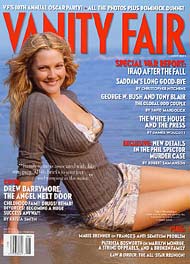There’s nothing like getting into a really good brainstorming session to get the mental juices flowing and the beanie propellers revving. I had a great little conversation with one of my favorite people, Andrew Jones, when I ran into him downtown today during lunch. Andrew’s one of these smart guys that always has a lot of ideas, a lot of information to draw upon, and a hoard of energy to back it all up.
We were talking about Andrew’s company, Zerendipity, which is working on a system for linking together entrepreneurs, experts, mentors, and venture capitalists in the BC area to help entrepreneurs find the people and resources they need to get started. It got me onto the topic of linking customers with companies and vice versa.
As I see it, companies are pretty clueless about their customers – this occurred to me while doing research for my business plan class. Try and find specific information about customers. Really specific information, beyond the broad brush strokes of age and income demographics, is hard to find, especially if you don’t yet have any customers. If you do have customers, you probably have some information about customers, but you’re not using it as well as you could be. Case in point: Safeway.
 Last year, I noticed the inordinate amount of bulk unaddressed mail I was getting to my apartment. I decided to collect the mail for a year, just to see who was sending what, how much, and how often. It was pretty shocking: by the end of the year I had 20 pounds of junk mail from businesses that I either had never shopped at, or never would shop at in the future. Lots of these companies had essentially wasted their advertising dollars, and produced no value. Beyond the usual small business mail, realtors’ “I just sold a house!” proclamations, the major bulk of the mail came in the form of newspaper flyers from a limited number of businesses. Safeway came away as the worst offender, mailing a newspaper flyer roughly once a month.
Last year, I noticed the inordinate amount of bulk unaddressed mail I was getting to my apartment. I decided to collect the mail for a year, just to see who was sending what, how much, and how often. It was pretty shocking: by the end of the year I had 20 pounds of junk mail from businesses that I either had never shopped at, or never would shop at in the future. Lots of these companies had essentially wasted their advertising dollars, and produced no value. Beyond the usual small business mail, realtors’ “I just sold a house!” proclamations, the major bulk of the mail came in the form of newspaper flyers from a limited number of businesses. Safeway came away as the worst offender, mailing a newspaper flyer roughly once a month.
Looking at the mass of flyers, something occurred to me: my wife and I shop at Safeway religiously, and we use our Safeway Club Card on all our purchases. Hadn’t anyone at Safeway realized this, and thought, “Hey, if we look at who currently shops with us already, maybe we could avoid wasting money on customers we already have!” I guess not. If I were them, I’d cull the Safeway Club purchase transaction database, note purchasing patterns, and directly mail customized offers to existing customers or new customers. Though it would cost more on a per-mail basis, the overall campaign could be designed to cost the same by reducing the physical size of the flyer and the number of customers targeted. Not only would it be more environmentally responsible, it would also maximize the “bang for the buck” businesses receive from their advertising budget.
Similarly, companies don’t seem to be too smart about asking their customers for information on what they’d like. For example, try to suggest to Sony a feature you’d like on their next camcorder. Or give feedback on why you didn’t buy a product because of a design feature you didn’t like. Go ahead, I dare you. Even if you manage to find some way to contact the company and give feedback, I guarantee all of the value you could have added to the company’s next product has just been relegated to the electronic wastebasket.
Who will help these companies?


